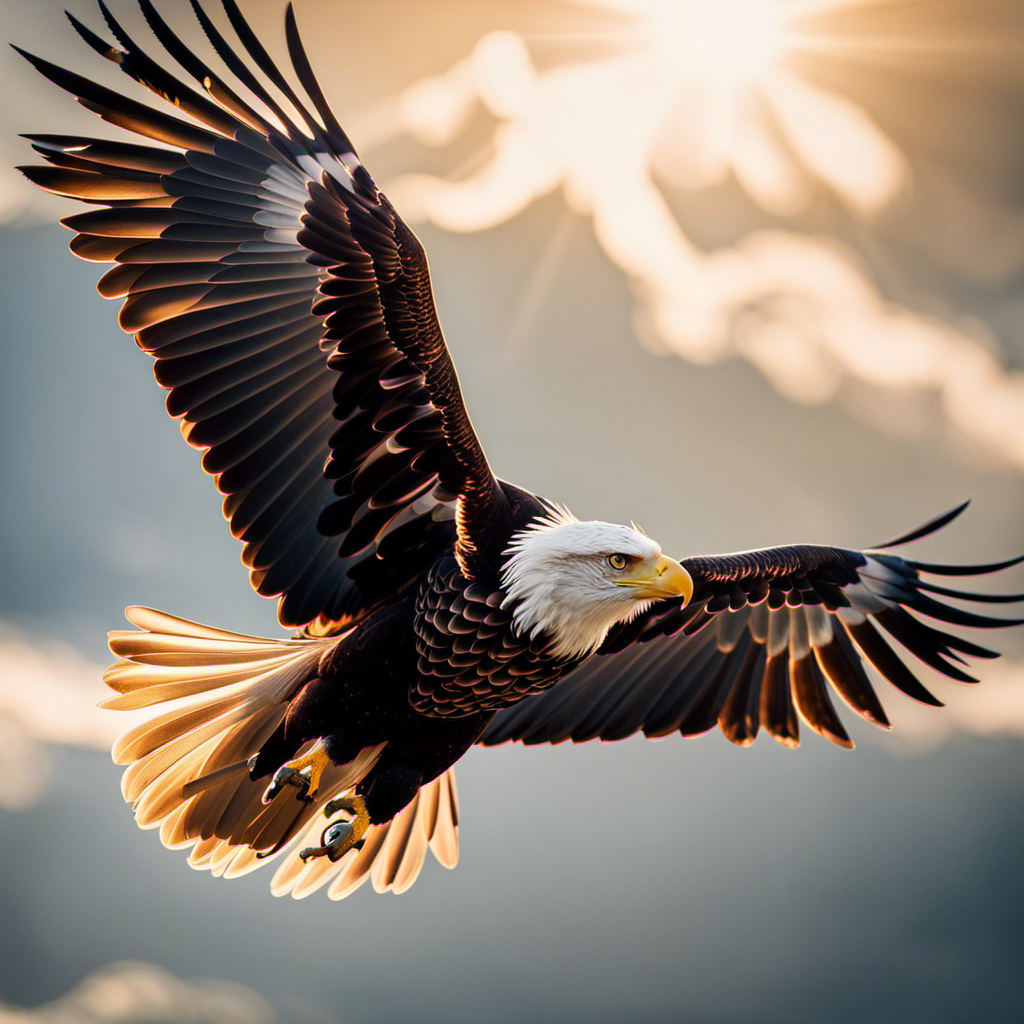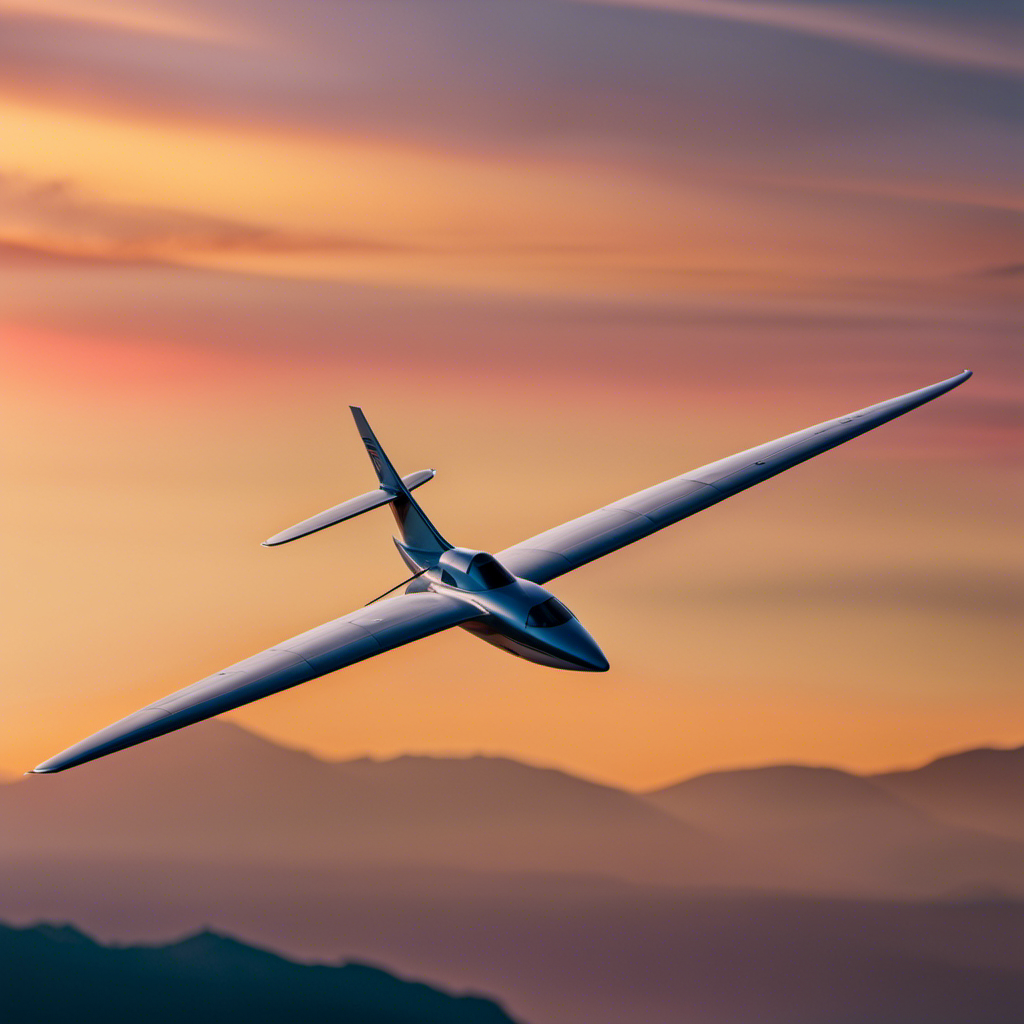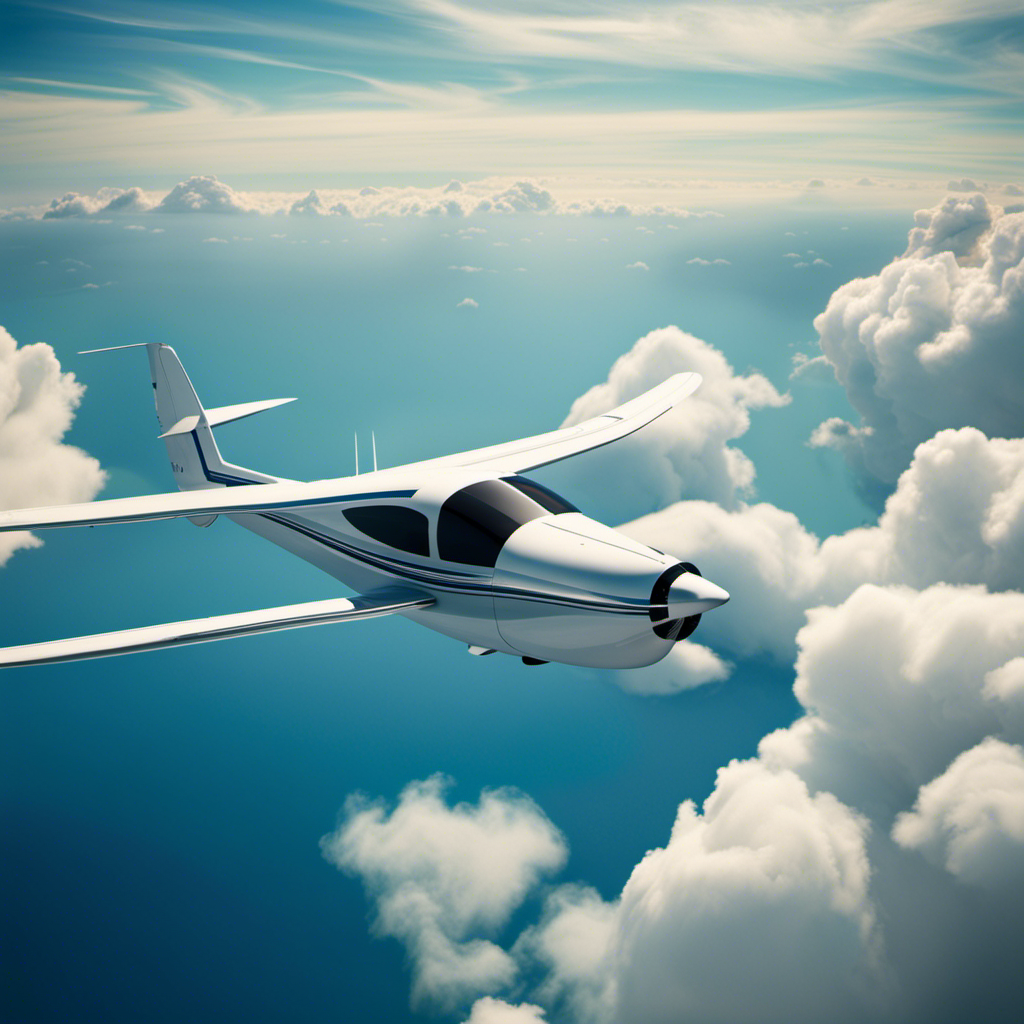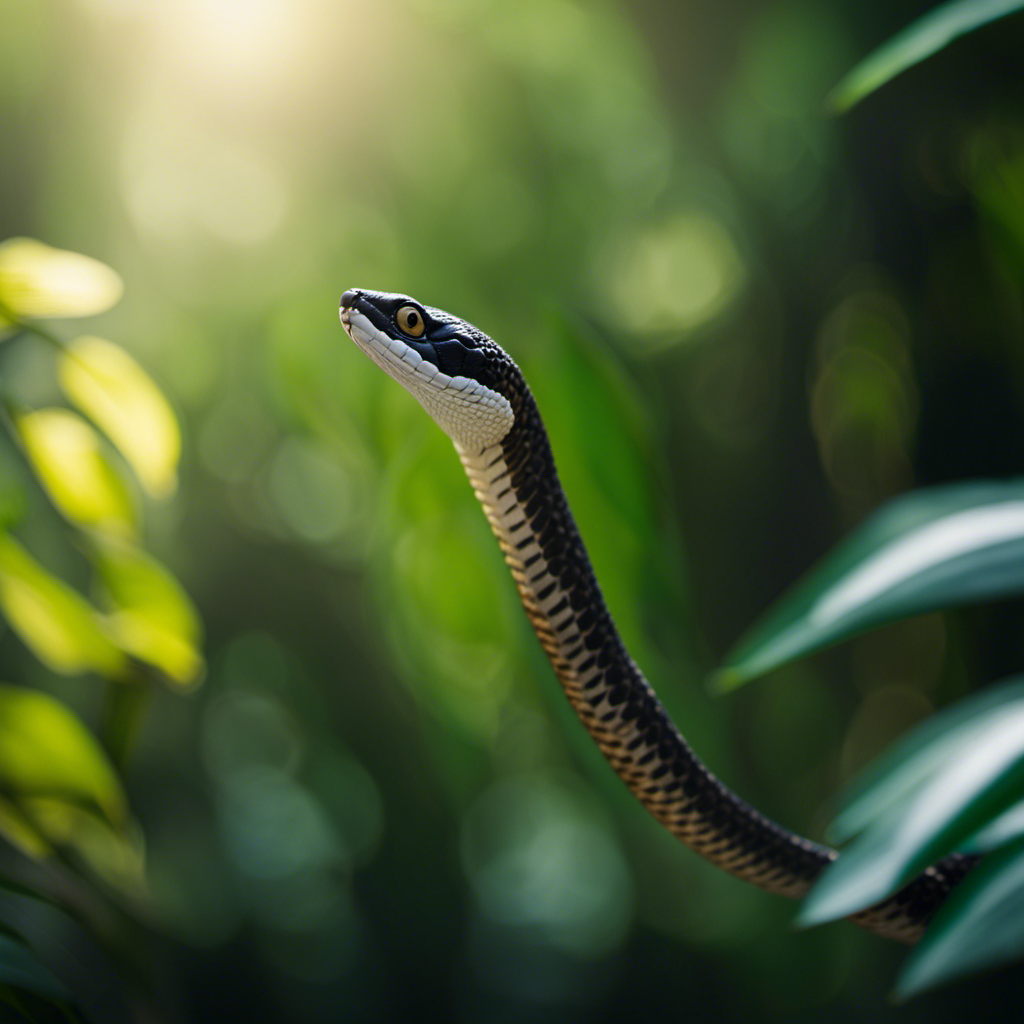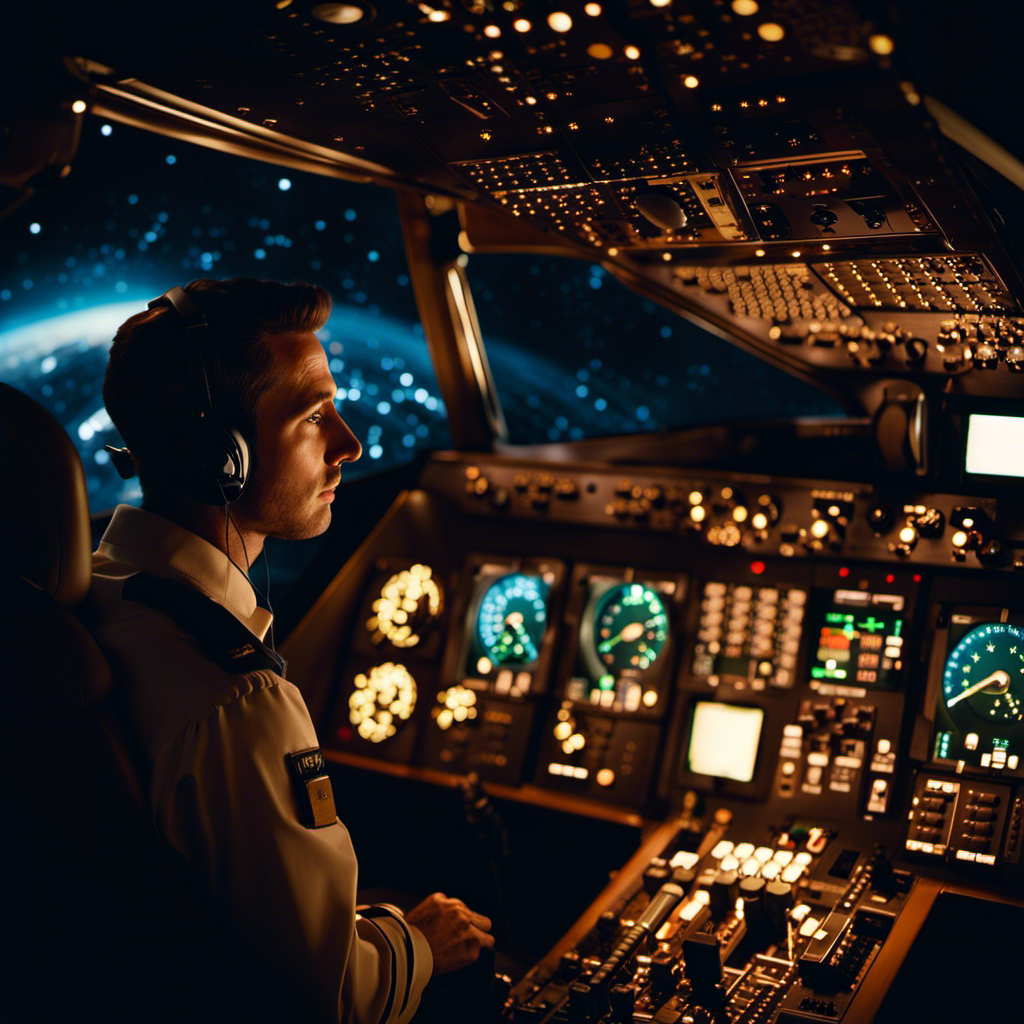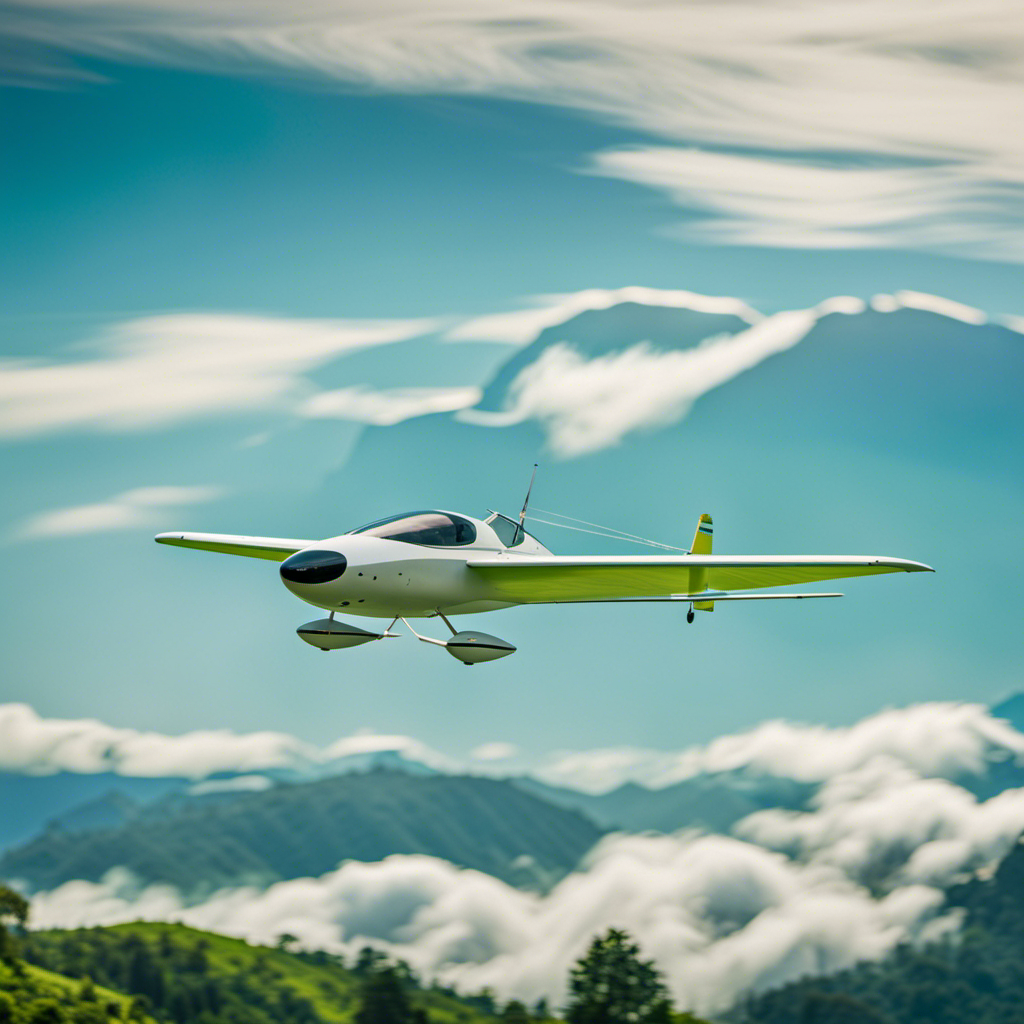As I soar through the sky, I am amazed by the remarkable adaptations that allow me to stay aloft. My graceful flight is achieved through a unique blend of traits and abilities.
From my streamlined body shape to my hollow bones, every aspect of my physiology is finely tuned for soaring. My powerful muscles and efficient respiratory system enable me to flap my wings with precision and endurance.
Coupled with keen eyesight, vocalizations for communication, and courtship displays, these adaptations are the secret to my mastery of the skies.
Key Takeaways
- Elongated and tapered wings for minimizing drag and providing lift
- Streamlined body shape for efficient soaring flight
- Hollow bones for reduced weight and improved maneuverability
- Powerful wing muscles for flapping and efficient lift generation
Streamlined Body Shape
The streamlined body shape of birds allows for efficient soaring flight. This hydrodynamic body shape is a result of millions of years of evolutionary advantages. The elongated and tapered wings of birds minimize drag and provide lift, allowing them to glide effortlessly through the air.
The streamlined body also reduces turbulence and increases stability during flight. The curved beak and streamlined head further contribute to the aerodynamic profile of birds, helping them maintain their speed and maneuverability. This adaptation allows birds to conserve energy while covering long distances in search of food and suitable habitats.
However, another crucial adaptation for soaring flight is the presence of hollow bones for reduced weight, which we will discuss in the next section.
Hollow Bones for Reduced Weight
You can thank hollow bones for making it easier for you to fly. Hollow bones are a remarkable adaptation found in many birds, allowing them to achieve flight with remarkable efficiency. These bones are not solid like those of mammals; instead, they have a network of air cavities within them.
These air-filled spaces significantly reduce the weight of the bird’s skeletal system, making it lighter and easier to lift off the ground. The reduction in weight provided by hollow bones is crucial for birds to achieve flight, as it allows them to conserve energy and maneuver more effectively in the air.
With their lightweight skeletal structure, birds can take full advantage of their next remarkable adaptation: powerful muscles for flapping wings.
Powerful Muscles for Flapping Wings
With powerful muscles, you’re able to generate the force needed for flapping your wings. These powerful wing muscles are essential for birds to achieve flight and perform various aerial maneuvers.
Here are some fascinating facts about the role of powerful wing muscles in enabling birds to navigate the skies:
- Muscle fibers in bird wings are specialized for quick and forceful contractions, allowing for powerful wing flaps.
- Birds have a unique wing structure that enables them to generate lift efficiently, minimizing energy expenditure during flight.
- The pectoralis muscles, located in the breast area, are the primary muscles responsible for flapping the wings.
- Birds have a high metabolic rate, which supports the energy demands required for sustained and agile flight.
With their powerful wing muscles, birds can execute energy-efficient flight techniques, such as gliding, soaring, and maneuvering through the air effortlessly. This seamless transition into the subsequent section about the efficient respiratory system highlights the interconnectedness of bird adaptations for flight.
Efficient Respiratory System
To maintain their high metabolic rate and support the demands of agile flight, birds rely on an efficient respiratory system. This system is specifically adapted to meet the challenges of high altitude flying.
One key adaptation is the presence of air sacs, which are found throughout a bird’s body and function as auxiliary respiratory structures. These air sacs allow for a unidirectional flow of air through the respiratory system, ensuring continuous oxygen supply to the muscles and organs.
Additionally, birds have highly efficient lungs with a unique structure that enables efficient gas exchange. Their lungs are rigid and do not expand and contract like mammalian lungs, allowing for a constant flow of fresh air.
This efficient respiratory system allows birds to fly at high altitudes where oxygen levels are lower, enabling them to navigate and soar effortlessly through the skies.
With their efficient respiratory system in place, birds have also developed other adaptations to enhance their flying abilities, such as keen eyesight for navigation.
Keen Eyesight for Navigation
Birds’ keen eyesight helps them navigate efficiently during flight. Their ability to see details and detect movement from afar allows them to locate food sources, avoid obstacles, and find their way back to their nests. The advantages of their keen eyesight include enhanced depth perception, color vision, and an ability to focus on both stationary and moving objects.
Birds also utilize various navigation techniques, such as landmark recognition, celestial cues, and magnetic field detection, to orient themselves and maintain their intended flight path. These navigation abilities are crucial for birds that migrate long distances, as they rely on their visual acuity to navigate through unfamiliar territories.
As birds’ keen eyesight plays a vital role in their flight navigation, it is complemented by other adaptations, such as their feathers for lift and maneuverability.
Feathers for Lift and Maneuverability
You can appreciate how feathers provide birds with the necessary lift and maneuverability for their impressive aerial acrobatics. Feathers serve multiple functions in the world of avian flight, extending beyond their role as insulation. Here are three fascinating ways feathers contribute to a bird’s ability to soar through the skies:
-
Lift Generation: The intricate structure of feathers creates an airfoil shape, generating lift as air passes over and under them. This lift allows birds to stay aloft and maneuver effortlessly through the air.
-
Maneuverability: Feathers are not only lightweight but also highly flexible. This flexibility enables birds to adjust the shape and angle of their wings, allowing for quick turns, dives, and complex flight patterns.
-
Communication: Feathers play a crucial role in communication among birds. Vibrant plumage and unique feather patterns help birds attract mates, establish territories, and convey social status within their species.
Understanding the multifaceted functions of feathers provides insight into the incredible adaptations birds have developed for flight. Transitioning to the subsequent section, let’s explore the specialized wing shape for different flight styles.
Specialized Wing Shape for Different Flight Styles
Take a moment to consider how the specialized wing shape of different bird species allows for a variety of flight styles and behaviors. One key aspect of wing design is flexibility, which enables birds to adapt their wings to different flight conditions. Some birds have flexible wings that can change shape during flight, allowing them to maneuver easily and adjust their flight speed. Others have wings with a fixed shape that optimize their flight speed for efficient long-distance travel. This diversity in wing flexibility and flight speed optimization is evident when we examine the wing shape of various bird species.
| Bird Species | Wing Shape |
|---|---|
| Hummingbird | Short and rounded |
| Eagle | Broad and flat |
| Albatross | Long and narrow |
| Sparrow | Pointed and swept-back |
| Owl | Large and rounded |
Understanding these different wing shapes and their relationship to flight behaviors is crucial for studying the biomechanics of bird flight. It also highlights the incredible adaptability and efficiency of birds in the sky. As we delve deeper into avian flight adaptations, we will explore how birds utilize their aerodynamic tail for stability.
Aerodynamic Tail for Stability
The aerodynamic tail of birds provides stability during flight by adjusting the angle of their feathers. This adaptation allows for precise control of their movements in the air, ensuring smooth and efficient flight.
Here are some key features of the aerodynamic tail:
-
Flexible feathers: The feathers on the tail are highly flexible, allowing birds to change the angle of their tail quickly and easily.
-
Tail shape: The shape of the tail is typically rounded or forked, which helps reduce drag and turbulence during flight.
-
Tail muscles: Birds have strong muscles attached to their tail, enabling them to manipulate its position and shape.
-
Tail movements: Birds can adjust the angle of their tail feathers independently, allowing for precise adjustments in flight.
-
Flight maneuvers: The aerodynamic tail plays a crucial role in performing complex flight maneuvers, such as quick turns and dives.
Transitioning to the subsequent section about ‘migration adaptations,’ birds also possess remarkable adaptations that enable them to undertake long-distance journeys.
Migration Adaptations
After exploring the aerodynamic tail as an adaptation for stability during flight, I will now delve into another fascinating aspect of bird adaptations: migration.
Birds have developed remarkable migration strategies and navigation techniques to undertake long-distance journeys across vast stretches of land and sea. Migration is a complex behavior exhibited by numerous bird species, allowing them to exploit seasonal resources and avoid harsh environmental conditions.
These strategies include utilizing celestial cues, such as the position of the sun and stars, as well as landmarks and magnetic fields for navigation. Some birds, like the Arctic Tern, migrate incredible distances, covering up to 44,000 miles round-trip between their breeding and wintering grounds. These remarkable avian journeys are a testament to the adaptability and resilience of birds in their quest for survival.
With their incredible migration abilities, birds also require efficient digestive systems for energy.
Efficient Digestive System for Energy
You can see how birds’ efficient digestive systems enable them to obtain the energy they need for their remarkable migrations. Birds have evolved an efficient metabolism that allows them to extract as much energy as possible from the food they consume. Their digestive system is specifically designed for nutrient absorption, ensuring that they can efficiently break down and absorb the necessary nutrients for energy production.
Birds have a high metabolic rate, which means they can convert food into energy at a faster rate than many other animals. This enables them to sustain their energy levels during long flights. Their digestive system is optimized for this purpose, with a specialized structure that allows for efficient digestion and absorption of nutrients.
The efficient metabolism and nutrient absorption of birds play a crucial role in their ability to undertake long and strenuous migrations. By efficiently extracting energy from their food, birds are able to fuel their flights and maintain the stamina needed for these incredible journeys.
As we delve further into understanding bird adaptations, we will explore the next aspect of their physiology: enhanced thermoregulation.
Enhanced Thermoregulation
Birds have evolved a remarkable ability to regulate their body temperature, which enables them to thrive in a wide range of environments. Enhanced thermoregulation is a crucial adaptation that provides birds with several evolutionary advantages.
One of the main advantages is the ability to maintain a consistent internal body temperature, even when external temperatures fluctuate. This allows birds to inhabit extreme environments, such as deserts or polar regions, where temperature variations can be drastic.
Birds achieve enhanced thermoregulation through several adaptations, including insulation provided by feathers, effective blood flow regulation, and specialized metabolic processes. These adaptations help birds conserve heat in cold environments and dissipate excess heat in hot environments, ensuring their survival.
Moreover, enhanced thermoregulation allows birds to engage in energy-demanding activities, such as flight, for extended periods without overheating. This ability to regulate body temperature is closely linked to the next topic of discussion: the ability to hover and hover-hunt.
Ability to Hover and Hover-Hunt
The ability to hover and hover-hunt is a remarkable feat achieved by birds through specialized wing adaptations. These adaptations allow birds to remain stationary in mid-air, giving them an advantage in catching elusive prey. Here are 5 fascinating aspects of their ability to hover and hunt:
- Wing morphology: Birds that hover have long, narrow wings with high aspect ratios, enabling them to generate lift efficiently.
- Rapid wingbeats: Hovering birds have the ability to beat their wings rapidly, creating enough lift to counteract gravity and remain suspended.
- Tail control: Birds use their tail feathers to stabilize themselves during hovering, making small adjustments to maintain their position.
- Precision vision: Hovering birds have excellent visual acuity, allowing them to spot prey with great precision even while remaining stationary.
- Feeding strategies: Birds employ various hunting techniques while hovering, such as plucking insects out of the air or sipping nectar from flowers.
The ability to hover and hover-hunt showcases the incredible adaptations birds have developed for successful hunting. These adaptations are not only fascinating but also essential for their survival.
Transitioning into the next section, birds also rely on vocalizations for communication, which plays a crucial role in their social interactions and mating rituals.
Vocalizations for Communication
Vocalizations, such as songs and calls, are essential for birds to communicate with one another and fulfill their social needs. Birds have developed a wide range of vocalizations that serve various purposes, from attracting mates to defending territories. These vocalizations allow birds to convey important information without relying solely on visual cues. Through their songs and calls, birds can communicate their identity, location, and intentions to other members of their species. Nonverbal communication methods are particularly important for birds that live in dense forests or other habitats where visual communication may be limited. For example, the Northern Mockingbird has an impressive repertoire of over 200 different songs, which it uses to establish its territory and attract a mate.
| Vocalization Type | Purpose | Example Birds |
|---|---|---|
| Songs | Attracting mates | Nightingales, Canaries |
| Calls | Alarm signals | Blue Jays, Chickadees |
| Contact Calls | Maintaining contact | Penguins, Parrots |
| Begging Calls | Parent-offspring communication | Albatrosses, Gulls |
| Courtship Calls | Courtship rituals | Peacocks, Swans |
Courtship Displays and Mating Adaptations
Courtship displays and mating adaptations are fascinating behaviors that birds use to attract a mate and ensure reproductive success. Courtship rituals play a crucial role in mate selection, allowing birds to showcase their fitness and genetic quality. These displays can take various forms, including elaborate dances, vibrant plumage displays, and melodious songs.
For instance, male peafowls showcase their brilliant tail feathers in a mesmerizing display, while male bowerbirds construct intricate bowers to attract females. These courtship rituals are not only visually appealing but also serve as indicators of the males’ health and genetic superiority.
Mating adaptations, on the other hand, involve physical and behavioral traits that enhance reproductive success. These adaptations can include specialized genitalia, such as the corkscrew-shaped penis of ducks, or behavioral strategies like cooperative breeding seen in some bird species.
Understanding the courtship displays and mating adaptations of birds provides insight into the fascinating world of avian reproductive biology. Transitioning into the subsequent section about unique adaptations of specific bird species, it is intriguing to explore how different birds have evolved specific traits to optimize their survival and reproduction.
Unique Adaptations of Specific Bird Species
Male hummingbirds have evolved long, slender bills that enable them to extract nectar from deep within flowers. These unique adaptations have allowed hummingbirds to develop intricate mating rituals and foraging techniques that are both fascinating and awe-inspiring.
Here are three remarkable aspects of their behavior that evoke a sense of wonder:
-
Elaborate courtship displays: Male hummingbirds perform intricate aerial displays to attract females. They engage in high-speed dives, mid-air acrobatics, and rapid wingbeats, showcasing their agility and strength.
-
Territorial behavior: Male hummingbirds fiercely defend their feeding territories, often engaging in aggressive aerial battles with rival males. Their vibrant plumage and distinct vocalizations contribute to their territorial displays.
-
Efficient foraging techniques: Hummingbirds have the ability to hover in mid-air and feed from flowers while maintaining an incredibly high metabolism. They can flap their wings up to 80 times per second, allowing them to consume nectar and insects with remarkable precision.
These unique mating rituals and foraging techniques highlight the remarkable adaptations of hummingbirds and their ability to thrive in their habitats.
Frequently Asked Questions
What are some examples of bird species with unique adaptations for soaring flight?
Some bird species have unique adaptations that enable them to soar through the air effortlessly. These adaptations, known as flight mechanics, allow birds to take advantage of air currents and thermals to stay aloft for extended periods of time.
How do birds use their feathers for lift and maneuverability during soaring flight?
Birds use their feathers for lift and maneuverability during soaring flight through a combination of feather structure and aerodynamics. The shape and arrangement of feathers create lift, while adjustments in feather position allow for precise control and maneuvering in the air.
Can you explain the role of migration adaptations in enabling birds to soar in flight?
Migration adaptations play a crucial role in enabling birds to soar in flight. By taking advantage of thermals, birds can effortlessly gain altitude and cover long distances. Additionally, their streamlined wing morphology enhances their ability to ride air currents and maximize efficiency.
What are the advantages of having a streamlined body shape for birds during soaring flight?
Having a streamlined body shape provides several advantages for birds during soaring flight. It reduces drag, allowing for efficient movement through the air. This shape also helps to maintain stability and control while soaring, maximizing the bird’s ability to stay aloft for extended periods.
How do birds with different flight styles have specialized wing shapes that contribute to their ability to soar?
Birds with different flight styles have specialized wing shapes that contribute to their ability to soar. Wing shapes do differ between birds with different flight styles. These variations in wing shape enhance their aerodynamic efficiency and allow for sustained gliding and soaring.
Conclusion
In conclusion, the various adaptations that allow for soaring flight in birds are a result of millions of years of evolution. The streamlined body shape, hollow bones, powerful muscles, and efficient respiratory system all contribute to their ability to soar through the air effortlessly.
Additionally, their keen eyesight and vocalizations help them navigate and communicate with other birds. While these adaptations are well-documented and widely accepted, there is ongoing research to investigate the theory that certain bird species have unique adaptations that further enhance their soaring capabilities.
Further studies are needed to fully understand the complexities of avian flight and the incredible adaptations that allow birds to soar through the skies.
Orion, better known as “Jetstream,” is the voice that brings the stories of the skies to life. His fascination with aviation began at a young age, sparked by his father’s tales of flying and adventure. Orion’s journey into the world of gliding was serendipitous, and from the moment he took his first glider flight, he knew he had found his calling.
